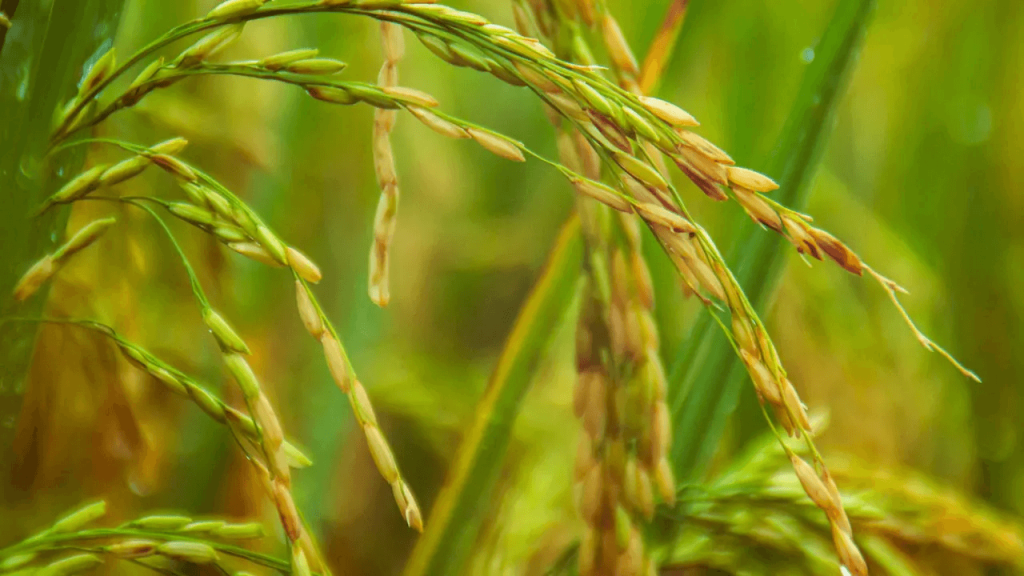Tags
Researchers Uncover Cold Tolerance Mechanisms in Rice
The COLD6 gene enhances cold tolerance in rice, offering a pathway for breeding cold-resistant varieties.

Summary
A study reveals that the COLD6 gene plays a crucial role in rice’s ability to tolerate cold stress by triggering a signaling pathway involving the production of 2′,3′-cAMP. This discovery could aid in developing rice varieties with improved cold resistance, essential for stabilizing yields in changing climates.
Key Takeaways
- COLD6 interacts with osmotin-like protein (OSM1) to enhance cold tolerance in rice.
- The study identifies a new signaling pathway for temperature perception beyond calcium signaling.
- Understanding this mechanism may help breeders develop resilient rice varieties amid climate challenges.
A gene called COLD6 contributes to cold tolerance in rice, potentially offering a pathway to use molecular design to breed a rice variety with higher resistance to cold stress. This work appears October 30 in the Cell Press journal Molecular Cell.
“Cold damage is a major challenge in rice production, and identifying key gene modules in signalling pathways is a crucial step in addressing this issue,” says senior study author Kang Chong of the Chinese Academy of Sciences. “Our research focused on uncovering the molecular mechanism behind crops’ response to cold stress. We hope to improve cold tolerance through molecular design and ultimately stabilize yields even under cold damage.”Rice plays a crucial role in ensuring global food security worldwide. With more than 15 million hectares of rice cultivation areas already affected by chilling due to climate change, low temperature poses a significant challenge to rice cultivation in 24 countries. As a result, a major goal in agriculture is to develop rice cultivars with enhanced tolerance to chilling through molecular design. While it is known that temperature sensors trigger Ca2+ signalling to confer cold tolerance in cells, less is known about sensors that couple with other secondary messages.
“It has long been assumed that cold sensors couple with calcium ions to trigger temperature perception in cells,” Chong says. “Our study reveals a new pathway of temperature perception in cells. We found that a plasma membrane-localized COLD6-OSM1 module triggered the production of the signalling molecule 2’,3’-cAMP, beyond calcium signalling, to initiate a defence reaction to low temperature.”
In the new study, Chong and colleagues identified a cold sensor complex consisting of chilling-tolerance divergence 6 (COLD6) and osmotin-like protein (OSM1). Under normal conditions, COLD6 interacts with rice G-protein α subunit (RGA1) at the plasma membrane. Under chilling conditions, OSM1 physically binds to COLD6, kicking out RGA1. This process, along with an increase in OSM1, leads to an elevation of 2’,3’-cAMP levels, ultimately enhancing chilling tolerance in rice. These signalling mechanisms may also apply to other crops, improving their cold tolerance. However, more research is needed to determine the exact mechanism underlying the COLD6-OSM1 module.
The researchers demonstrated that knockout and natural variation of COLD6 in hybrid rice enhances chilling tolerance. The findings suggest that allelic variation in COLD6 plays a role in geographical adaptation to growth temperature. According to the authors, the results are consistent with molecular evidence of rice domestication, indicating that a substantial number of domesticated alleles originated from wild rice in South and Southeast Asia.
“Overall, our findings suggest new strategies for breeding cold-resistant rice varieties,” Chong says. “By understanding how the COLD6-OSM1 complex works, breeders can potentially develop rice to stabilize yields even under cold damage, which is crucial as global temperatures fluctuate.”
https://www.technologynetworks.com/genomics/news/researchers-uncover-cold-tolerance-mechanisms-in-rice-392708Published Date: October 31, 2024






